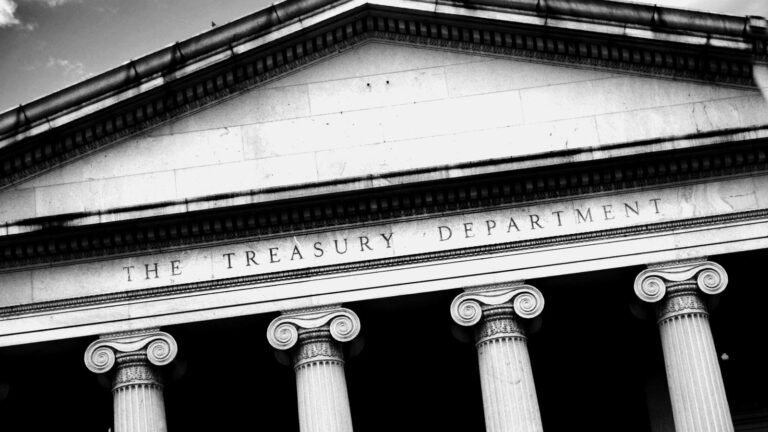Summary Points
-
Sanctions Imposed: The U.S. Department of the Treasury has sanctioned Grinex, the successor to Garantex, for aiding in laundering money for ransomware gangs, following Garantex’s previous sanctions.
-
Connection to Garantex: A TRM Labs report indicates that Grinex has strong ties to Garantex but lacked direct evidence of illicit transactions; Grinex emerged shortly after U.S. enforcement actions against Garantex.
-
Continued Operations: Grinex was set up to transfer funds from Garantex customer deposits after the original exchange’s domains were seized, claiming to operate in response to sanctions affecting its predecessor.
- Ongoing Investigations and Rewards: The Department of State is now offering a $6 million reward for information leading to Garantex executives’ arrests, emphasizing the threat to national security posed by cryptocurrency being exploited for illegal activities.
The Core Issue
In a decisive move to combat ongoing cybercrime, the U.S. Department of the Treasury has imposed sanctions on Grinex, a cryptocurrency exchange that emerged as a successor to the previously sanctioned Garantex. Garantex had been notorious for facilitating money laundering for ransomware groups and was linked to illicit transactions amounting to over $100 million before U.S. authorities seized its domains in March 2025. Despite a TRM Labs report asserting Grinex’s ties to its predecessor, it did not conclusively demonstrate its involvement in illegal activities. Furthermore, Garantex’s founders, along with several affiliated companies, have also seen renewed sanctions as they allegedly continued their operations under Grinex after the initial crackdown.
These developments were reported by the Treasury’s Office of Foreign Assets Control (OFAC) and echoed by U.S. State Department officials, who underscored the imperative of restoring integrity within the cryptocurrency sector. Under Secretary John K. Hurley emphasized the threat posed by these illegal enterprises to national security and the reputations of legitimate virtual asset service providers. The U.S. has even announced a reward of up to $6 million for information leading to the capture of Garantex’s executives, further illustrating the administration’s commitment to dismantling the structural obedience that allows these nefarious operations to proliferate.
Risk Summary
The recent sanctions imposed by the U.S. Department of the Treasury on Grinex—an alleged successor to the illicit Russian exchange Garantex—pose significant risks not only to Grinex itself but also extend far beyond its operations, threatening the integrity and viability of numerous other businesses, users, and organizations within the cryptocurrency ecosystem. The sanctions, rooted in Grinex’s perceived continuity of Garantex’s nefarious activities such as money laundering for ransomware gangs, can catalyze a ripple effect, undermining the trust across financial networks. Legitimate virtual asset service providers may face enhanced scrutiny and compliance burdens, leading to operational disruptions and potential loss of customer confidence. Moreover, users in the crypto landscape could unwittingly find themselves entangled in legal ramifications, facing asset freezes or penalties due to associations with sanctioned entities. This precarious intersection of regulatory oversight and criminal activity amplifies the reputational risks for compliant businesses, potentially dissuading investment and innovation in an already volatile market. Such widespread ramifications highlight the urgent need for vigilance and robust compliance measures within the global digital asset arena.
Possible Remediation Steps
In today’s rapidly evolving financial landscape, prompt action in the face of regulatory challenges is paramount, particularly regarding US sanctions on Grinex, the successor to Garantex.
Mitigation Steps
- Risk Assessment: Conduct a thorough evaluation of the exchange’s compliance landscape.
- Stakeholder Communication: Immediately inform stakeholders about changes and potential impacts.
- Regulatory Compliance: Adjust operational frameworks to align with U.S. regulations.
- Transaction Monitoring: Implement robust systems to track all transactions for illicit activities.
- Legal Counsel Consultation: Engage with legal experts specializing in sanctions to ensure strategic choices are informed.
- User Education: Provide resources to educate users on compliance and regulatory expectations.
- Data Protection Enhancements: Strengthen data security measures to safeguard against breaches.
Guidance on NIST CSF
The NIST Cybersecurity Framework (CSF) underscores the necessity of proactive risk management. Specifically, refer to NIST Special Publication 800-53, which provides detailed standards for security and privacy controls essential in mitigating risks related to sanctions and compliance.
Advance Your Cyber Knowledge
Discover cutting-edge developments in Emerging Tech and industry Insights.
Understand foundational security frameworks via NIST CSF on Wikipedia.
Disclaimer: The information provided may not always be accurate or up to date. Please do your own research, as the cybersecurity landscape evolves rapidly. Intended for secondary references purposes only.
Cyberattacks-V1

